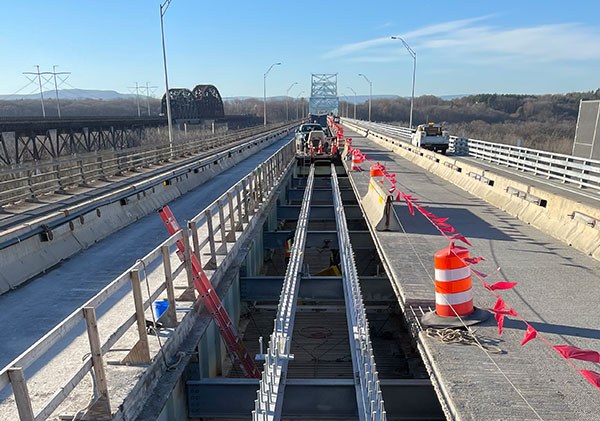When a dam breach destroyed the M-30 Causeway bridge spanning the Tobacco River and new design and construction threatened to displace communities for years, Acrow was there to bridge the gap. With no reasonable route to detour commuters between cities, MDOT knew they needed to find a resolution quickly. They decided a long-term temporary structure would be the best option to reconnect the community as quickly as possible. Modular steel bridging allows for immediate, durable and cost effective solutions while the designer decides on the future transportation needs of the corridor. Acrow has been providing quick, quality solutions to the construction and transportation industries for over 70 years.
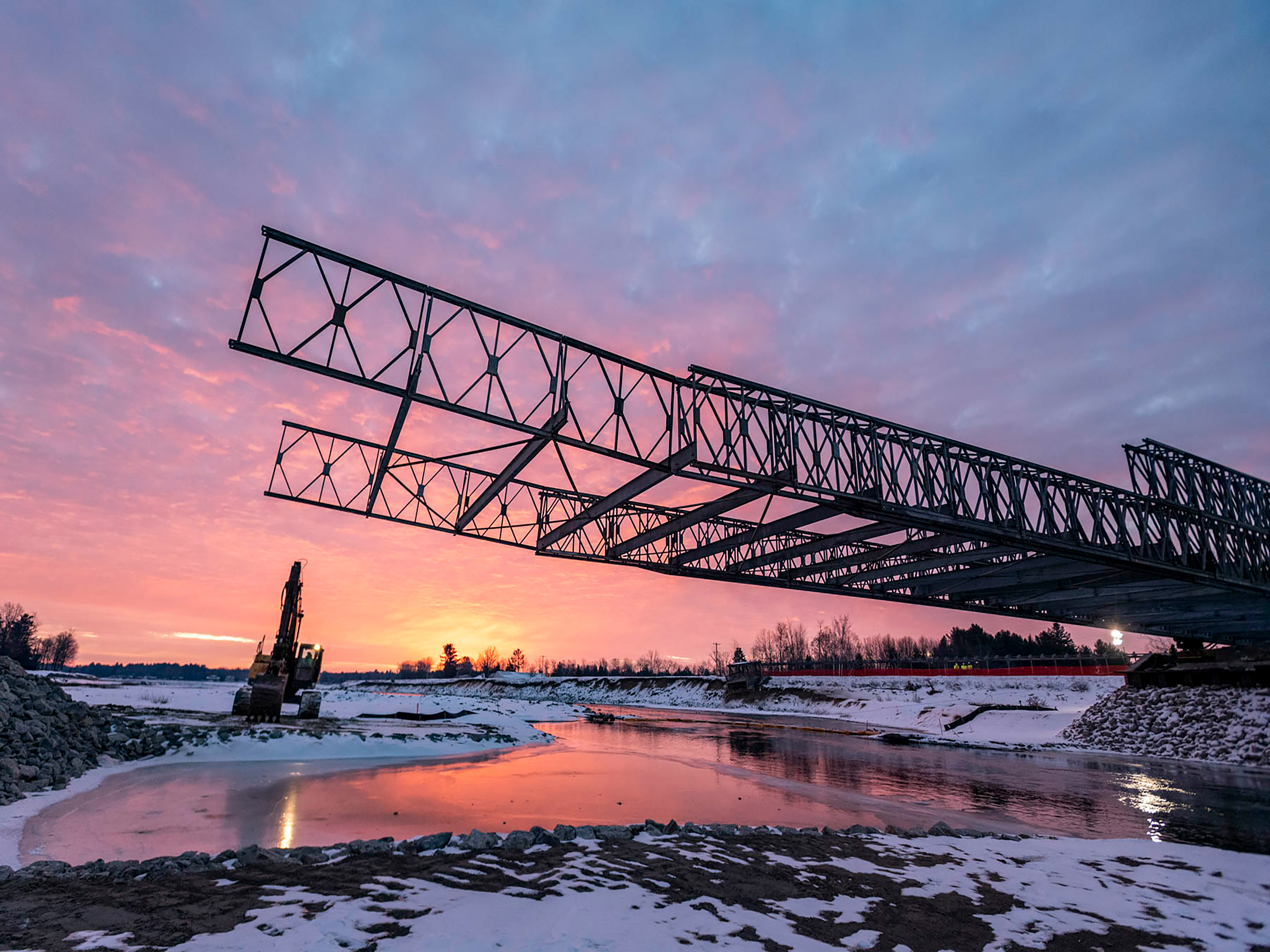
Eugene Sobecki, Director National Sales & Military Business Development at Acrow said:
“The flooding that occurred meant that entire communities were divided, forcing commuters and local residents to follow lengthy detours. Acrow’s bridges are ideal solutions for restoring damaged or destroyed infrastructure in emergencies and we are delighted that an Acrow bridge was selected to reconnect local communities on this project."
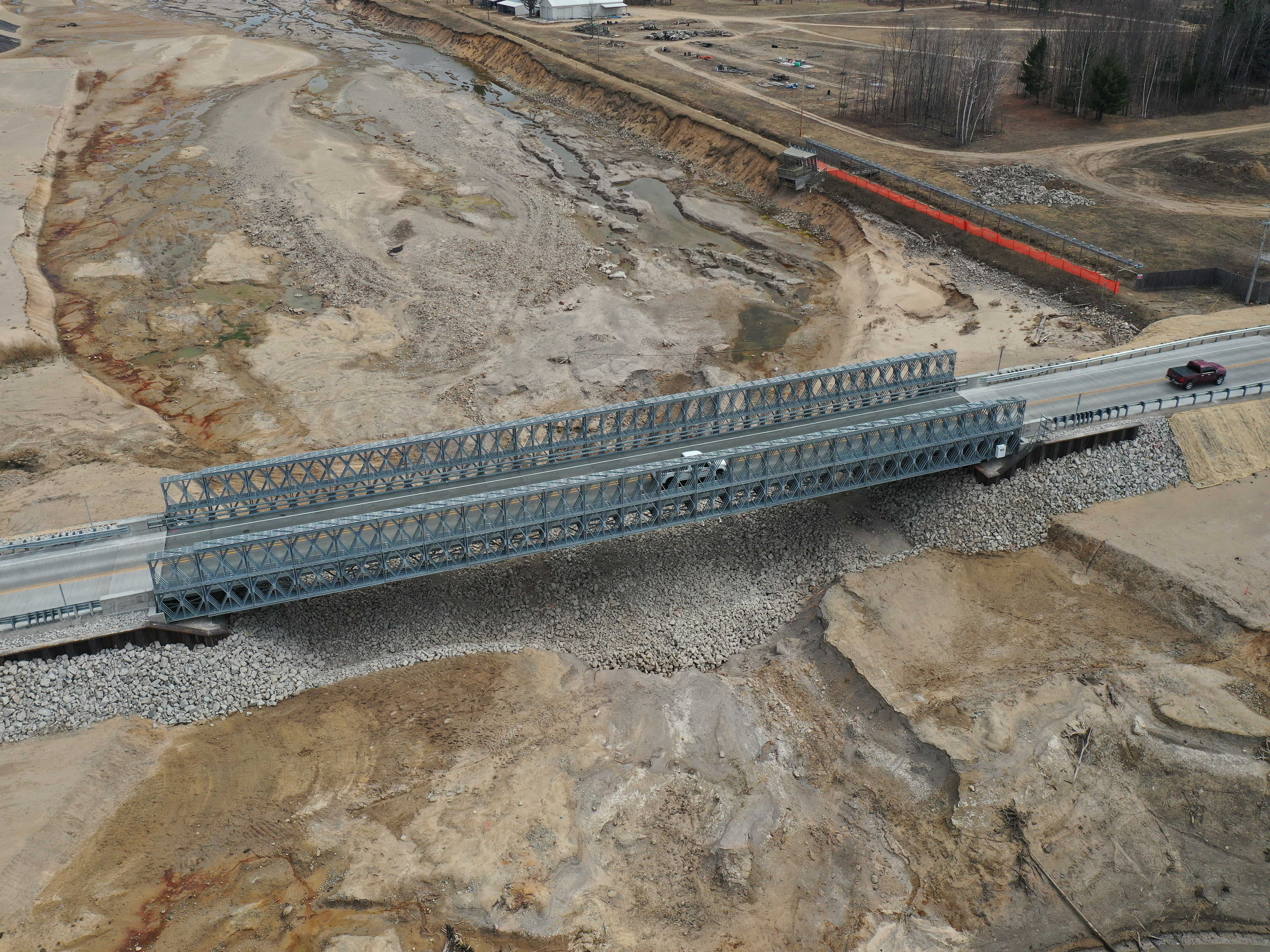
A pre-engineered modular steel 230 foot Acrow bridge weighing approximately 383 Tons was chosen as an alternative to lengthy detours for commuters as the M-30 Causeway bridge over the Tobacco River was destroyed due to a dam breach after heavy rain in May of 2020. This bridge allows MDOT to take the time they need to analyze the needs of the community and the corridor to make decisions that best fulfill those needs. The temporary bridge is expected to be in use for 3 years but has a minimum lifespan of 15 years, should the long-term project take longer than expected. Hot Dip Galvanizing of all the bridge components prevents corrosion, minimizes maintenance and promotes long life. This means that when the new permanent bridge is opened, the modular bridge can be disassembled and the components stored for reuse in planned and emergency projects across Michigan. Construction began in December of 2020 and in January, the bridge was onsite. Though the weather was uncooperative, the crew pushed through and the bridge was open to traffic in March 2021. This 4 month process is unparalleled compared to the 3-5 year process for traditional bridge construction, allowing the area to reopen less than a year after the floods.


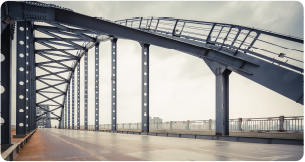


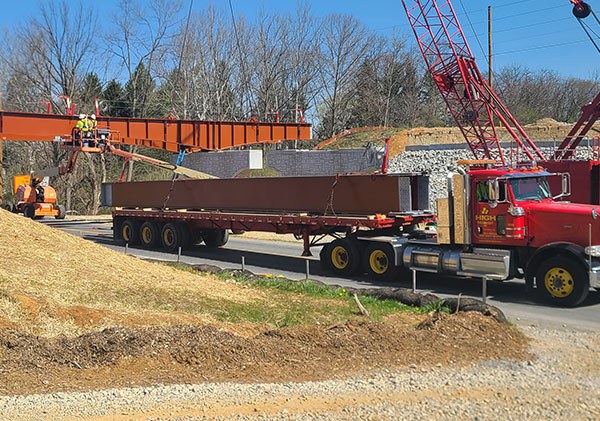
 SEE MORE
SEE MORE

